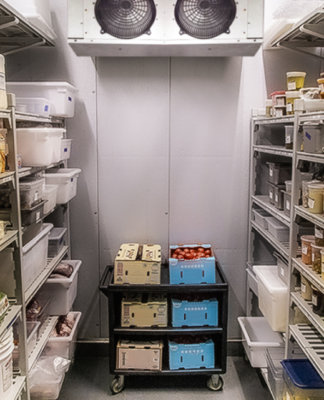Erosion is a natural process that happens when water, wind, or ice wears away at the earth’s surface. It can be a major problem for property owners, as it can lead to soil loss and even damage to structures on the property. In this blog post, we will discuss everything you need to know about erosion prevention. We will cover topics such as how to identify signs of erosion, what factors contribute to it, and how to take steps to prevent it. Soil conservation is important for everyone – read on to learn more!
Why are we hearing about erosions now?
In 2021, there were thousands of stories about the damaging impact of erosion on properties and landscapes worldwide. In the United States alone, the number of reported soil erosion incidents has sharply increased over the last few years. This is due to several factors, such as increased development, changes in climate, and deforestation. This is because global climate change has resulted in more regular, severe storms and higher precipitation amounts in many areas. These conditions, combined with poor land management practices, can lead to increased soil erosion and degradation of property over time.
What are the signs of erosion?
The most visible sign of erosion is soil loss; however, there are other signs to watch out for too. Look out for areas that appear bare or sparsely vegetated or where large chunks of the earth may have been washed away. You should also check for gullies—shallow channels created by flowing water—or cracks on the surface of your property. Additionally, if you notice any trees or shrubs leaning in an unexpected direction (towards the downslope), this could indicate that the soil beneath them is eroding.
What factors contribute to erosion?
Several key factors can lead to soil erosion, including climate conditions, land-use changes, and poor land management practices. Rainfall intensity, the slope of the terrain, the type of vegetation on site (or lack thereof), and prevailing wind direction all affect how quickly erosion occurs. Human activities such as deforestation, construction, and agricultural practices also influence the speed at which erosion takes place.
How do I know if my property has been affected by erosion?
Signs that your property may be at risk of erosion include visible changes to the land, such as rills or gully formation, gullies forming near roads or trails, soil slumping down a slope or hillside, or small landslides occurring regularly. You should also check for signs of vegetation being impacted (such as tree uprooting) and any other observable changes to the topography of your property. If you notice any of these signs, it is important to take action immediately.
How can I prevent erosion on my property?
Implementing proper land management practices is the best way to prevent soil erosion and protect your property from damage. This includes planting vegetation on hillsides to help hold the soil in place, building terraces on slopes or providing adequate drainage systems, and ensuring that no construction or land-use changes are made without proper precautions. Here are ten things that you can do to prevent property erosion:
Planting more trees: There is absolutely no substitution for planting trees. They are efficient at preventing soil erosion while providing shade and enhancing the visual appeal of your property.
Protecting existing vegetation: Make sure you do not cut down trees without a valid reason, as this can increase vulnerability to erosion. If necessary, consider planting other plants and shrubs to replace those that have been removed.
Limiting agricultural practices: Try to limit large-scale agricultural activities on your property, such as plowing or tilling. These activities cause a large amount of soil disturbance and, if done in excess, could increase the risk of erosion significantly.
Creating terraces: Terracing is a great way to slow down water movement along slopes, reducing the chances of eroding soil.
Building retaining walls: Retaining walls can be used to hold back the soil and protect it from being washed away due to heavy rain or wind.
Planting native grasses: Native grasses are better adapted to local conditions and provide more stability than other types of vegetation, helping minimize erosion.
Constructing gabion baskets: Gabion baskets are cages filled with rocks that can help stabilize steep slopes and stop water from washing away precious topsoil.
Installing a ditch system: A well-designed ditch system will help divert runoff away from vulnerable areas and reduce the chances of erosion occurring on your property.
Mulching regularly: Mulching helps keep moisture in the soil, prevents weed growth, and keeps the temperature steady. It also helps hold soil in place, reducing erosion from wind or water.
Properly disposing of waste: Ensure all waste is disposed of responsibly, as improper disposal can significantly increase the risk of erosion.
By taking these simple steps, you should be able to protect your property from erosion and keep it looking its best for years to come. If you have any questions or would like more advice on preventing erosion, contact a local land management specialist who will be able to provide further guidance and assistance.
There is nothing worse than seeing your property being eroded, but with a few simple steps, you can prevent this from happening and keep your land safe and secure. With the right know-how, it’s easy to protect your property from erosion!


























